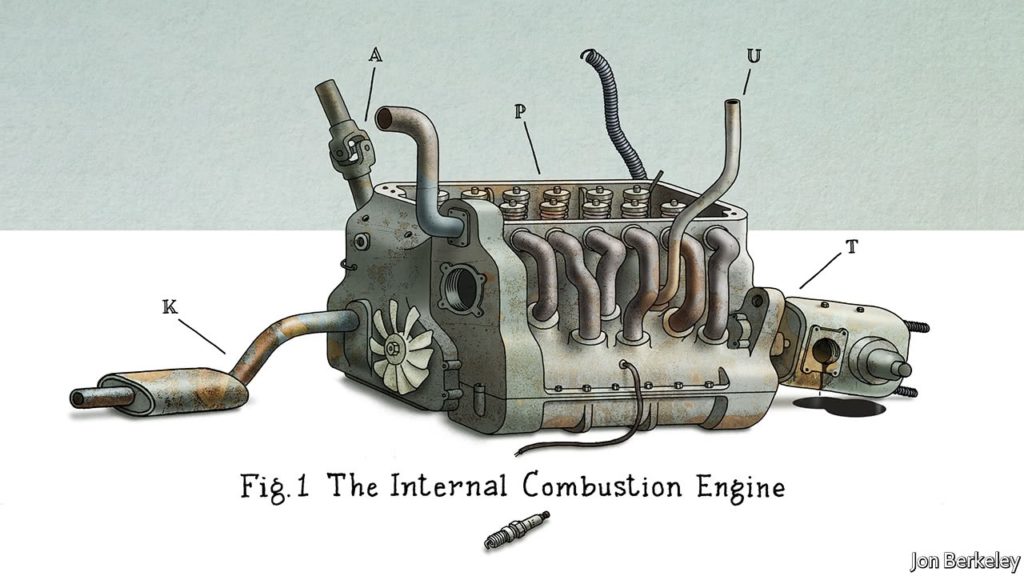
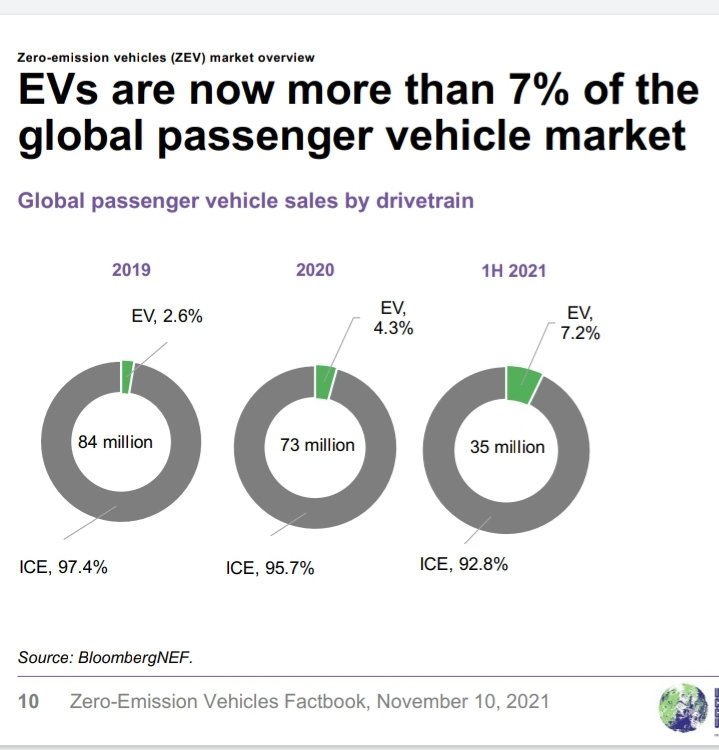
The Economist: “HUMAN inventiveness…has still not found a mechanical process to replace horses as the propulsion for vehicles,” lamented Le Petit Journal, a French newspaper, in December 1893. Its answer was to organise the Paris-Rouen race for horseless carriages, held the following July. The 102 entrants included vehicles powered by steam, petrol, electricity, compressed air, and hydraulics. Only 21 qualified for the 126km (78-mile) race, which attracted huge crowds. The clear winner was the internal combustion engine. Over the next century, it would go on to power industry and change the world.
“The internal combustion engine revolutionised human life. It made the commonplace possible: the car, the Uber, the bus, the motorbike. We took to the skies in aircraft and spread our wings across the world. It even mobilised war with tanks, ships, and submarines. Agricultural productivity soared with the development of the tractor and other farm machinery. It gave oil-producing countries unimaginable wealth.”
Many countries have put an end date for the sale of vehicles powered by petrol and diesel within 5 – 10 -15 years. In China, car buyers bought more plug-in vehicles in 2019 than the rest of the world combined. In Norway more than 60 percent of new cars registered in September this year were electric.
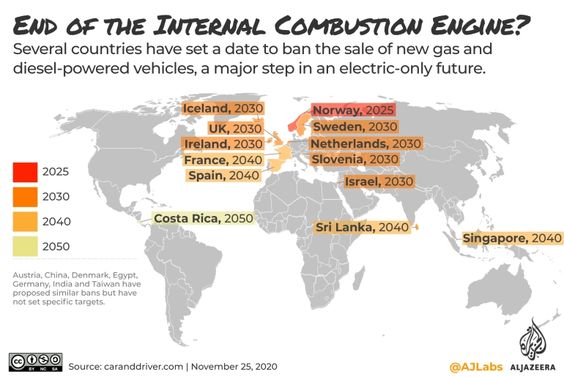
China and Europe lead, but this is global, the cost of batteries has recently fallen by about 90%. And car producers are competing for the longest reach for their battery pack, it will soon beat the reach of petrol and diesel cars.
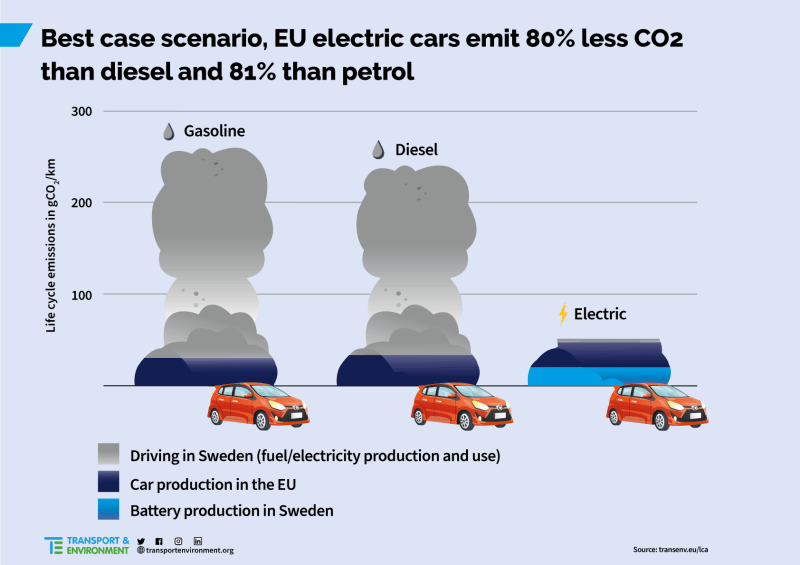
Latest data shows lifetime emissions of EVs lower than petrol, diesel
Electric cars in Europe emit, on average, almost three times less CO2 than an equivalent petrol or diesel car. That’s according to a new online tool developed by T&E that allows the public to compare the lifecycle emissions of an EV to fossil-fuelled vehicles.
Even in the worst-case scenario, an electric car with a battery produced in China and driven in Poland still emits 22% less CO2 than diesel and 28% less than petrol, the tool shows. In the best-case scenario, an electric car with a battery produced in Sweden and driven in Sweden can emit 80% less CO2 than diesel and 81% less than petrol.
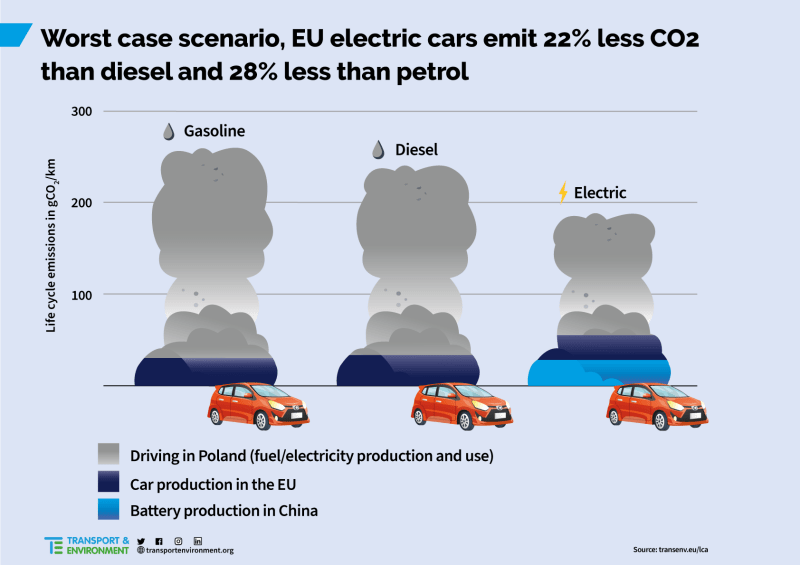
Another fact is that Electric Vehicles consists of 70% fewer parts and there are almost non-moving parts as compared to that of a petrol or diesel car. That means that once the production passes that of the petrol and diesel car it will be cheaper to both produce and not least maintain.
The economics are about to switch or may already have for the total cost of ownership. Over the next years towards 2025, higher performance, cheaper to operate, longer-range Electric Vehicles will be cheaper to buy than the cheapest ICE vehicle.




41 Comments
Pingback: Fossil fuel cars waste two-thirds of their fuel energy - Bergensia
Pingback: coffee ambience
Pingback: jungle boys weed
Pingback: คาสิโนออนไลน์ มาแรงแห่งปี ยกให้เป็น OK คาสิโน
Pingback: fairfax psychiatry
Pingback: ข้อดีของการ ทดลองเล่น สล็อต Joker ก่อนเล่นจริง
Pingback: cumshot
Pingback: Ford Everest
Pingback: ตู้เชื่อม
Pingback: เกียรติบัตรออนไลน์
Pingback: my page
Pingback: รูปแบบการแทงบอล บอลชุด 4 คู่
Pingback: abausmarketwiki.com
Pingback: BAU
Pingback: สวนหิน
Pingback: ทดลองเล่นสล็อต ฟรี
Pingback: ผลิตเสื้อยืด
Pingback: สล็อตเว็บตรง โบนัสแตกบ่อย ถอนเงินได้ชัวร์ไม่โกง
Pingback: รับจดทะเบียนบริษัท
Pingback: แทงบอลออนไลน์เกาหลี
Pingback: Bauc Info
Pingback: เค้กวันเกิด
Pingback: mlm business
Pingback: ยางไดอะแฟรม
Pingback: pgslot168
Pingback: ผู้ผลิต โบลเวอร์
Pingback: โคมไฟ
Pingback: 1xbet
Pingback: pg168
Pingback: molly36
Pingback: ติดต่อโรงงานจีน
Pingback: ชิปปิ้ง
Pingback: ศัลยกรรมตาสองชั้น
Pingback: พลาสติกปูพื้นก่อนเทคอนกรีต
Pingback: แฟรนไชส์น่าลงทุน
Pingback: 365win สล็อตแตกง่าย
Pingback: รับก่อสร้าง อพาร์ทเมนท์
Pingback: Mulch film
Pingback: Egyptian Slot
Pingback: ระบบ CRM
Pingback: av